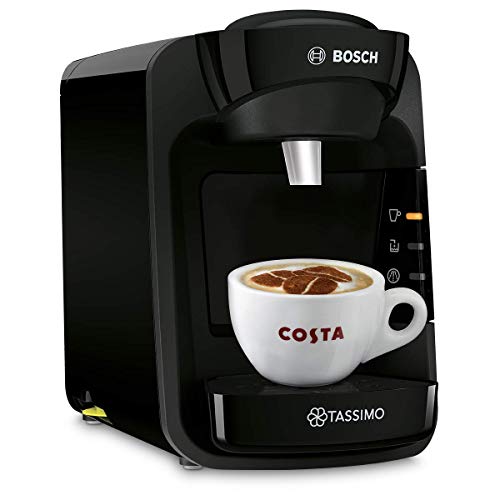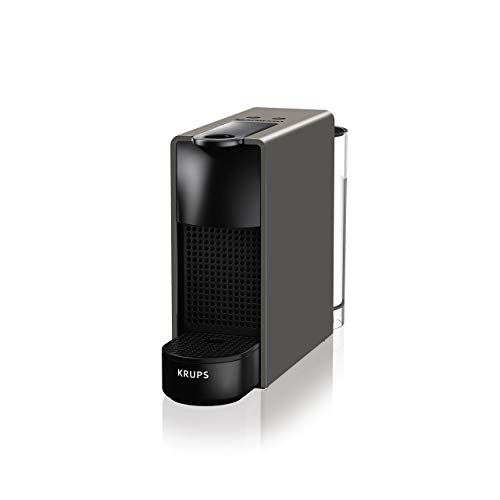Five Killer Quora Answers On Pod-Making Machines
 Detergent Pod-Making Machines
Detergent Pod-Making Machines
From K-Cup(r) and Tassimo(tm) to Nespresso(tm) and Senseo(tm) There are many different pod coffee machines with pods machines to pick from. They all function in the same manner by heating water by pressing the button.
 The process of making pods is a little more complex however it’s still easy enough to make at home. Here are some things to look out for when buying a pod-making device:
The process of making pods is a little more complex however it’s still easy enough to make at home. Here are some things to look out for when buying a pod-making device:
Detergent Pod Manufacturing
Detergent pods are convenient and efficient. They are also environmentally friendly. What is the process of making them? The process is quite simple. A single-dose coffee capsule machine contains dissolvable film that dissolves in contact with water. This film is usually made of polyvinyl ethanol. It is easily dissolved in water and does not leave any traces on clothes. A few additional ingredients go into the formula for detergent that include chelating agents to soften hard water and decrease detergent degradation optical brighteners that improve the appearance of whites and also fragrances or other additives to provide pleasant scents.
The sachets are then sealed to protect the contents from moisture and contamination while in storage, transportation and even during use. Laundry pod makers employ high-speed production methods to meet the demand. They can make between 600 and 240 pods each minute. This ensures that the product is delivered according to deadlines.
Tide manufactures a portion of these pods. Tide uses only top-quality ingredients made in the USA and does not import cheaper substitutes. It also makes sure to verify and trace its raw ingredients.
A machine for making laundry pods has a product hopper which keeps liquid detergent in storage until it’s used. Then, a precise dispenser fills each pod with precisely measured amounts of detergent. The machine then heat seals the pod. The patented design of the machine protects the water-soluble film, while routine inspections maintain 0.02ml accuracy.
The films of Pod also contain minor components, like denatonium which gives them an unpleasant taste and makes to repel liquids. MonoSol, for example is made up of Bitrex, a quaternary compound of ammonium known as denatonium. The chemical is so bitter that it can dissuade humans from as low as 0.01 percent. It also discourages pets and children from putting sachets in their mouths.
When you’re not using your laundry pods, store them out of the reach of young children or pets. By storing them away from light and moisture you can stop the ingredients from degrading too quickly. Proper storage conditions can also prolong the life span of the detergent. Always remove laundry pods from the premises after use.
Detergent best pod coffee machine Packaging
Detergent pods are an increasing trend, gaining market share for dishwasher and laundry detergents as well as personal items like shampoo. They contain a concentrated mixture of surfactants, additional cleaning ingredients, and a water-soluble coating. They are simple to use, store and are a safer alternative to liquid cleaners.
Pods aren’t the same as traditional detergent containers made of PET plastic, which may contain harmful chemicals like 1,4 dioxane. Instead, they contain the harshest chemicals in a mix, and are enclosed in a polyvinyl alcohol film. These chemicals may differ based on the brand. They may include surfactants and bleaches as well as optical brighteners, solvents or enzymes. These ingredients are available on the websites of the manufacturers.
The PVA used in the film to cover the pods is biodegradable, and is listed on the Environmental Protection Agency’s CleanGredients database. It also holds the Nordic Swan eco-label, one of the most stringent eco-labels that exist. The EPA mentions that it is able to be broken down into simple, natural compounds by microorganisms found in wastewater treatment and soil plants.
Laundry pods are a popular alternative to liquid detergents and many brands provide an array of options, ranging from basic laundry detergent to stain removers and fabric softeners. In the US they comprise 15 percent of household detergent sales according to a research by Nohbo.
Most pods are made up of a single dose, but some also include fabric softeners and stain removers, as for scent boosters. Many manufacturers add anti-bacterial properties to the detergent to fight against bacterial growth, too.
Many have complained about the fact that laundry pods don’t disintegrate completely, despite their utility. This is usually the case if you overfill the washer tub, use water that is extremely cold or if you add the pods to early in the cycle. It could also happen if the user fails to take the time to read the instructions thoroughly since the pods need the right temperature and pressure to dissolve properly.
Pods aren’t toys, so consumers should keep them out of reach of children. Ensure they are kept in a secure area to store them. They should also be emptied before being placed in the dishwasher or washing machine. Recycling the packaging as soon as it is possible will reduce waste and avoid pollution.
Detergent Filling Pods
Laundry pods are fast replacing liquid detergents traditionally used in the cleaning market for households. The little packets are easy and convenient to use, and they do not require measuring. They are available in various sizes and strengths. Based on the needs of your laundry, you can choose from single-dose laundry detergent pods, multi-compartment pods, or even powder detergent pods.
The secret to pods is their thin film that encapsulates them. It must be able to hold liquids and solids that are chemically active, while retaining its shape. However, it must also dissolve completely and quickly in water – even cold water. Many companies have opted for a polymer called PVA which has both of these properties. The rest of the pod is made up of powerful bleaches, detergents and solvents. It also contains optical brighteners, preservatives enzymes, and preservatives. Typically, manufacturers list their detergent’s ingredients.
Contrary to powder and liquid detergents that are packed in high-density plastic pods are made of polymers made from plants that can be broken into smaller pieces by microbes that live in soil or ocean waters. According to researchers at the Woods Hole Oceanographic Institution, PVA is broken down in less than 70 days in the sewage sludge. This is significantly faster than conventional detergent, which takes hundreds of years to break down.
While laundry pods have revolutionized the world of laundry however, they’re not without disadvantages. One drawback is that they’re more expensive than liquid or powder detergents. If you accidentally lick the pod, you will be confronted by a unpleasant taste as well as a chemical burn.
They’re not as versatile as traditional detergents. The laundry pods are confined to the wash cycle listed on the packaging. This can be a problem for front-loading or top-loading washing machines with automatic fabric softener and detergent dispensers. If your washer has an drum, pods may not dissolve correctly.
Speak to your local laundromat for the best coffee machines with pods choice. Be sure to read the instructions carefully. If your clothes show streaks or spots after washing them with a pod, don’t add any more detergent. Don’t put your detergent-stained clothes in dryers because the heat will make the stains more difficult to remove later.
Detergent Pods Inspection
Laundry detergent pods are well-known because they dissolve quickly and efficiently in hot water and remove the stains from all fabrics. However the pods aren’t without controversy. Many activists refer to them as plastic and they are a rising source of litter and marine debris. Although it is true that polyvinyl and PVOH which are used to make the pods, are derived from oil, the makers claim that these types of plastics aren’t as much of a risk as other types due to the fact that they are biodegradable when placed in water.
Since their introduction in 2012, laundry pods have grown in popularity. They now account for more than one-third of the sales of liquid detergent in the United America. The sachets are distributed by several major brands and are available in a variety of scents and colors. They are roughly the size of an ice-cube. The pods, which are marketed as eco-friendly are a result of the concentration of detergent in a pre-determined amount. According to the Cleaning Institute, which represents major multinationals like Procter and Gamble, this results in less packaging and weight, and lower emissions from shipping. The makers also claim that the pods’ starches from plants and other natural materials help to make them water-soluble and they can be biodegraded in a short period of time in water treatment plants.
The pods could be dangerous if handled incorrectly, despite all the hype. The thin membranes that contain the detergent can break open easily and irritate a person’s skin or eyes and, if consumed by large amounts, they could cause chemical poisoning. The outer packaging designed to keep children away from the pods can also split at the zipper track. In September 2012, Consumer Reports called on manufacturers to ensure the safety of their pods by switching their transparent containers into opaque ones and adding child-resistant latches. A number of manufacturers responded and added additional safety warnings.
To avoid any problems, keep the pods away from seniors, children, and pets. Store them high or secure them to stop children from mistakenly identifying the pods for candy. Also, ensure you make use of a detergent that is compatible with your type of washer. Be aware that cold water particularly if it’s below 60 degrees Fahrenheit can not dissolve the pods, causing your machine to clog or leave residue on your clothing.